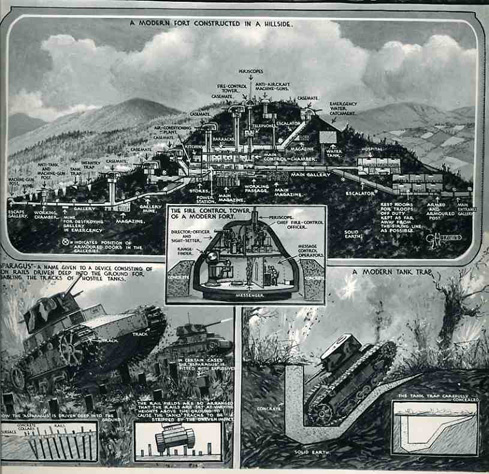'Digital washing' can wreck your strategic business planning


After the horrors of the First World War, the French Minister of War Andre Maginot was successful in initiating, designing and building a vast defensive underground and overground 'Maginot Line' to protect France from future German invasion from the east. There is a worrying similarity to some of the digital transformation strategies currently being conducted by large enterprises today.
Between 1929 and 1936 vast amounts of concrete was being poured, tunnels dug and forts built along the German border with France between Switzerland and Luxembourg, based on defending France from any future Great War style attacks from Germany. History was not kind to the Maginot Line - elaborate tank traps and other devices to impede the advance of land armies turned out to be a great folly as one million men and 1,500 tanks led by Heinz Guderin and Erwin Rommel simply went around it, quickly passing through the supposedly impassible Ardennes forests and on to Paris in their infamous 'Blitzkreig'.
The huge and complex concrete Maginot Line infrastructure was rendered redundant within hours with enemy aircraft flying over it and horse drawn German troops pouring through the Ardennes area as the French struggled to mobilize from their defensive position within their concrete bunkers.
Many enterprises are gauging the transition from inflexible, brittle enterprise era resource planning-based tech infrastructure to something they hope anticipates our post digital world. Presumably the Maginot image above is the period equivalent to today's Powerpoint strategy presentations explaining readiness for the onslaught of ever greater change in a world that has moved to always-on mobile devices that pump out analyzable data at ever greater rates from a rich array of digital activities.
The reality is that we are entering a very new era and that much planning doesn't anticipate the speed and agility of challenges to their markets.
'Digital Washing'
There is an element of "Digital Washing" that enables the naivety. "Cloud washing" was the purposeful and sometimes deceptive attempt by tech vendors to rebrand an old service by associating the word "cloud" with it, and we are now seeing the same labeling of old workflows and tech with the buzzword "digital".
It's an inevitable part of the technology world marketing: new ideas and movements go from obscurity and early stage maturation to a rapid acceleration as business value is established. Once there's understanding, desire and a sense that they could be a threat to the established vendors (who may well be very committed to a certain way of doing things), the deliberate obfuscation, passing off and confusion starts.
In the case of cloud technologies, simplified data center architecture, automated policies, self provisioning, self scaling and consumption-based billing posed a huge challenge to traditional on-premise infrastructure and associated capital expenditure.
We had a couple of prime-time years of 'cloud washing', but that era has settled a little as more people understand the true core tenets of what is and isn't cloud. However, the new business opportunities and ecosphere partially enabled by cloud's maturation -- digital-- is now deep in the throws of a new generation of hype and misrepresentation.
This is the quarter 'digital' is both demystifying and being distorted. The overused drama words 'disruption' and 'transformation' can imply correction of past efforts, but the realities on the ground are very different. The huge integration vendors are now all about digital transformation but in most cases their marketing is very ahead of available resources and skillsets, which are historically geared up to provide services around the MISO (MSFT, IBM, SAP & ORCL) axis.
Some parts of society are digital and highly connected, other parts aren't. Many in the agricultural world are completely familiar with the internet of things because they have been living with it for years. Their machinery is bristling with sensors, and data from the land is abundant -- and yet many of these same business entities have a last century back office to process all the data they generate.
Chinese internet users (who mostly access using phones) are overtaking English language users, and yet it is hard to do business in China without using fax machines, which are at the center of that culture's deal making and supply chain agreements. Nearly half the world's internet use is in Asia, but use models are very different to the west.
I could carry on with dozens more facts and figures but the salient point is that in many cases Western businesses are treating their digital business strategic planning in the same way the French military planned the Maginot line: preparing for a past that isn't going to repeat itself.
We are now well into the 21st century but many businesses are stuck with intractable processes from the last millennium, compounded by legacy enterprise technologies. Planning for our post-digital future (where digital interactions are the norm and not a new-fangled emergent exception) is admirable, but many are paying lip service to the ideas while sticking to their ring binders and digital filing cabinets ...and buying old ways of working that have been digitally washed and not fit for new purposes.